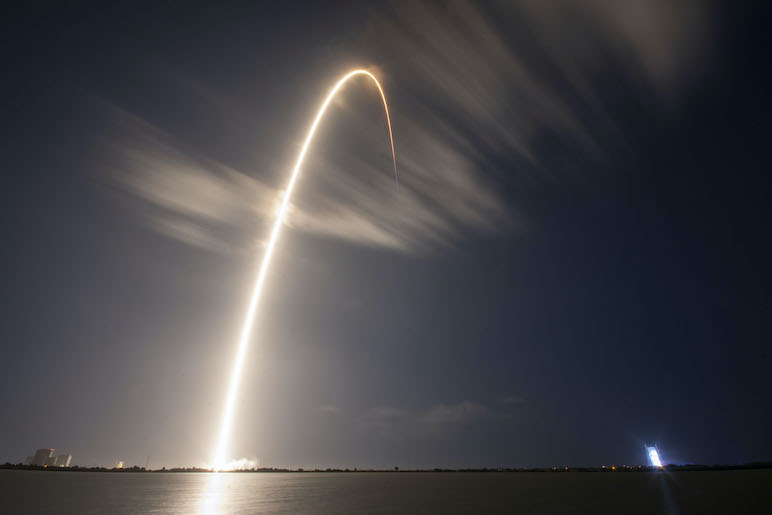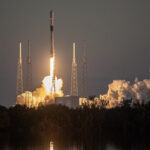The U.S. Space Force, Space and Missile Systems Center (SMC) and its mission partners successfully launched the Lockheed Martin-built fourth GPS III satellite at 6:24 p.m. Nov. 5 from Space Launch Complex 40 at Cape Canaveral Air Force Station, Florida. The satellite was carried to orbit aboard a Space Exploration Technologies Corporation (SpaceX) Falcon 9 launch vehicle.
GPS III SV04 separated from its upper stage approximately 90 minutes after launch. U.S. Space Force and Lockheed Martin engineers at the company’s Denver Launch & Checkout Operations Center declared GPS III SV04 “separated” from its SpaceX Falcon 9 rocket and “flying” under their control. Using its own onboard liquid apogee engine to climb to operational orbit, it will head to its station approximately 12,550 miles above Earth.
Once it arrives, the engineers will send the satellite commands to deploy its solar arrays and antennas, and prepare GPS III SV04 for handover to Space Operations Command. Engineers and operators at Lockheed Martin’s Waterton Facility will begin on-orbit checkout and tests, estimated to take approximately one month. Operational use is expected to begin in a few months.
Originally scheduled for a September launch, it was pushed back twice, the last time on October 2 due to a blocked 1/16″ engine valve. The first-stage booster landed on a droneship stationed in the Atlantic Ocean nine minutes after liftoff. It will return to the pad for a re-use flight on another GPS satellite mission in 2021.
GPS III SV04 will join the current GPS constellation comprised of 31-operational spacecraft. GPS III, the newest generation of GPS satellites, brings new capabilities to users.
[Photo: The Falcon 9 carrying GPS III SV04 lifts off from Cape Canaveral Air Force Station, Florida, Nov 5. A single long-exposure shot that captures the full launch. The thick streak of light from the ground is the first stage. The arc and thinner streak is the booster falling back to earth after the engines shut down for separation. Courtesy SpaceX.]






